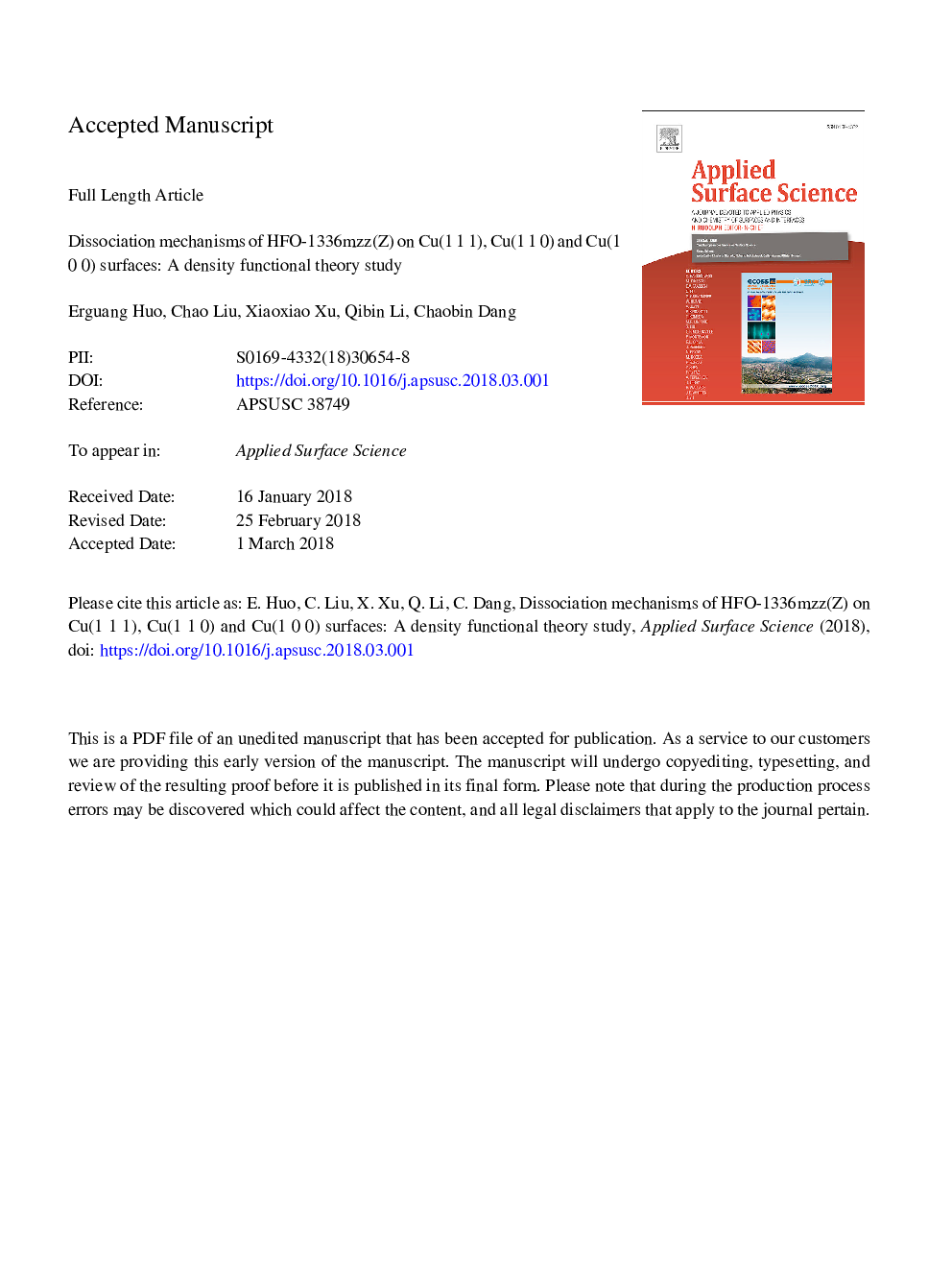| Article ID | Journal | Published Year | Pages | File Type |
|---|---|---|---|---|
| 7834598 | Applied Surface Science | 2018 | 27 Pages |
Abstract
The catalytic effect of Cu(1â¯1â¯1), Cu(1â¯1â¯0) and Cu(1â¯0â¯0) surfaces on the decomposition of HFO-1336mzz(Z) have been investigated by using Density Functional Theory (DFT) calculations. On the basis of adsorption energy analysis, the most stable adsorption energies of HFO-1336mzz(Z) and relevant products on Cu(1â¯1â¯1), Cu(1â¯1â¯0) and Cu(1â¯0â¯0) surfaces were studied, respectively, and the co-adsorption structures of relevant species were obtained. Finally, four initiation decomposition reactions of HFO-1336mzz(Z) on Cu(1â¯1â¯1), Cu(1â¯1â¯0) and Cu(1â¯0â¯0) surfaces were proposed and investigated, respectively. At the same time, the four similar homolytic reactions of free HFO-1336mzz(Z) molecular were calculated to compare with the dissociation reactions occurred on Cu(1â¯1â¯1), Cu(1â¯1â¯0) and Cu(1â¯0â¯0) surfaces and illuminate the catalytic effect of Cu(1â¯1â¯1), Cu(1â¯1â¯0) and Cu(1â¯0â¯0) surfaces on the HFO-1336mzz(Z) decomposition. The results indicated that Cu(1â¯1â¯1), Cu(1â¯1â¯0) and Cu(1â¯0â¯0) surfaces had a good catalytic effect on the decomposition of HFO-1336mzz(Z). The fracture reactions of CC bonds on Cu(1â¯1â¯1), Cu(1â¯1â¯0) and Cu(1â¯0â¯0) surfaces were easier to occur than that of other reactions. Cu(1â¯0â¯0) surface had the highest catalytic activity and the lowest for Cu(1â¯1â¯1) surface.
Related Topics
Physical Sciences and Engineering
Chemistry
Physical and Theoretical Chemistry
Authors
Erguang Huo, Chao Liu, Xiaoxiao Xu, Qibin Li, Chaobin Dang,
